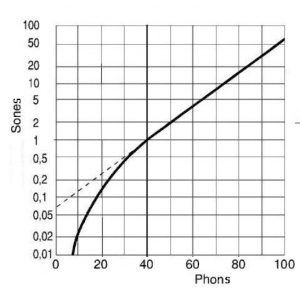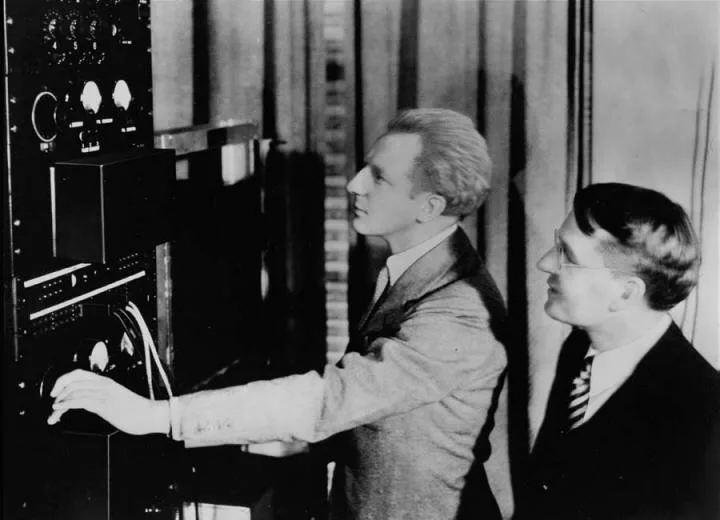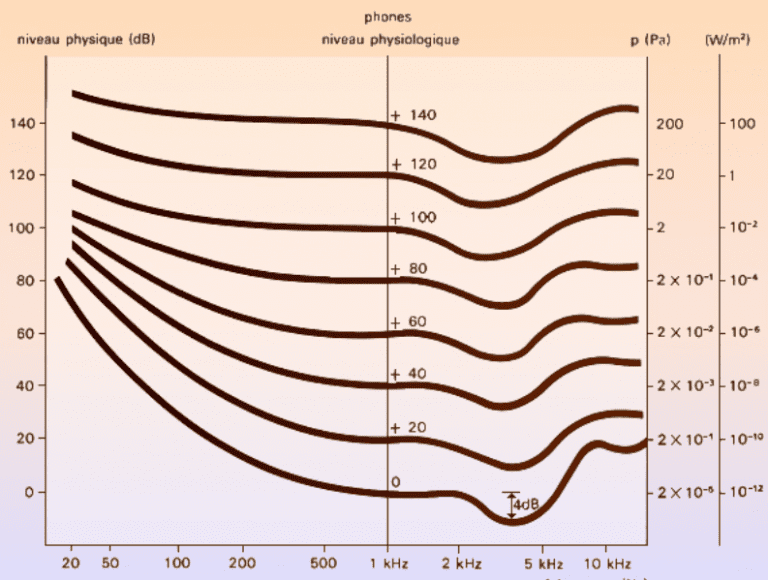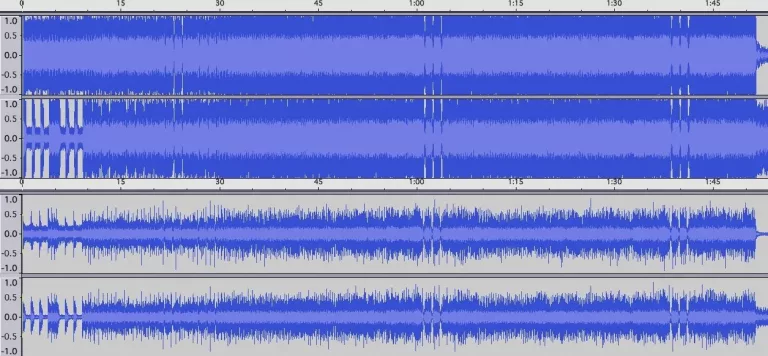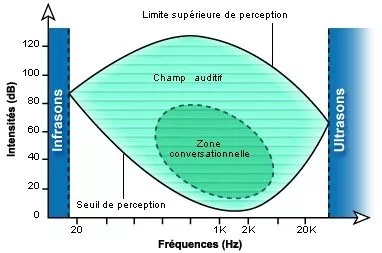Loudness part 1: Theory
This article aims to provide you with the theoretical foundations necessary for understanding Loudness.
We want to provide you with all the necessary information to understand and effectively apply the concept of Loudness. In this regard, we have decided to write a series of articles that will explain each aspect of this complex concept in detail. Our goal is to guide you step by step in your understanding and practical application of Loudness.
Prerequisites
Before discussing this concept, it is important to introduce the different units of sound measurement such as dBSPL, dBu, and dBSL. It may seem complicated to understand at first glance. In an upcoming article, I will explain in detail the origin and functioning of the different sound units.


To address the concept of Loudness, it is important to understand the fundamentals of the different types of decibels. Sound levels are expressed in different decibel units depending on their use. The decibel is always calculated using a logarithmic comparison between a measured value and a given reference.
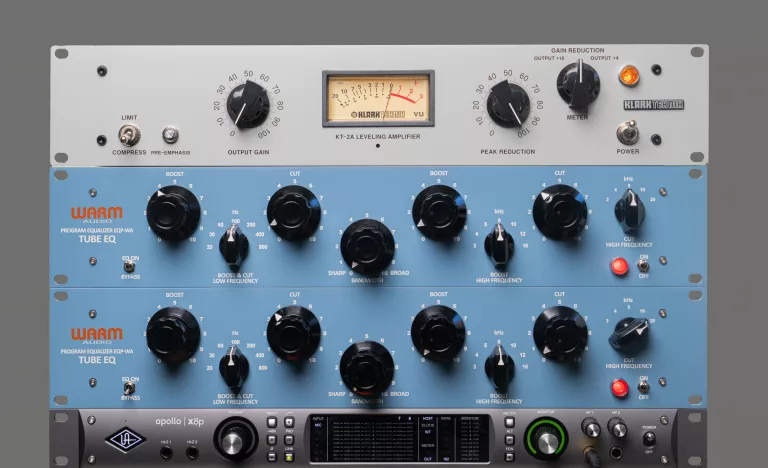

- The dBSPL (Sound Pressure Level) = L = 20 log p/p0, which measures the level of acoustic pressure in decibels. It is expressed in terms of the acoustic pressure P in Pascal, with P0 being the reference pressure equal to 2×10^-5.
- The dBu, used to measure the amplitude of an electrical signal, is calculated as follows: L=20 log U/U0, where U represents the electrical voltage in Volt and U0 is the reference fixed at 0.775 Volt.
- The dBSL (Sound Level) = L = 10 log I/I0, which measures sound intensity in decibels. Sound intensity is denoted by the letter I and is expressed in watts per square meter (W.m-2), and I0 is the reference equal to 10^-12 W.m-2. This unit corresponds to the rate of energy flow per unit area.
In conclusion, understanding sound level requires knowledge of several types of decibels, each with its own reference and application.
What is Loudness?
Loudness is a complex concept that takes into account the perception of sound level by the human being. This perception is psychosensory and therefore related to psychoacoustics. This takes into account the different frequencies that make up a sound.
To measure this perception, there are two units of measurement: phones and sones.
The phones is a measurement of sound power in decibels for a sound with a frequency of 1000 Hz, while the sone corresponds to the perception of a sound at 1000 Hz at 40 dBSPL above the perception threshold for this frequency. The relationship between these two units is therefore: 1 sone equals 40 phones.
Personalities who played a role in the development of this notion
In 1923, Harvey Fletcher proposed a Loudness scale based on the relationship between the perceived Loudness difference and the intensity ratio between two sounds. This scale is equal to ten times the decimal logarithm of the intensity ratio, or 10log(I1/I2). This scale helped to better understand human perception of sound volume and was used as the basis for developing the current Loudness scale.
Understanding Loudness Scientifically: Explanations
Firstly, the scientific understanding of Loudness involves prior knowledge of how our ears perceive sound pressure. However, it is difficult to determine Loudness accurately due to the unique characteristics of each frequency. Additionally, since music consists of complex signals that constantly vary over time, evaluating Loudness becomes even more complex.
Next, it is important to note the difference in dynamic range when evaluating Loudness. Dynamic range measures the difference between a loud and a quiet sound level. In music, dynamic range can vary considerably and be different at each moment of a piece. Thus, the less dynamic range in the music, the higher the perceived acoustic pressure will be. This element is therefore a fundamental characteristic to take into account when evaluating Loudness.
Using the Fletcher scale, it can be observed that the human ear is capable of perceiving frequencies within an audible bandwidth ranging from 20Hz to 20kHz. However, according to the diagram, the ear is more sensitive to frequencies between 1kHz and 5kHz due to the resonance of our voice in this frequency range. Additionally, the perception of frequencies varies depending on the sound level: the higher the level, the more low frequencies are perceived.
Indeed, our frequency balance varies depending on the sound level. This means that the perception of different frequencies in music will depend on the volume at which we listen to it. Thus, the same music can seem to have a different frequency balance depending on the sound level. This variation can be taken into account in the evaluation of Loudness.
Loudness : Analysis of Essential Characteristics
Measurement units
- The LUFS, or Loudness Units Full Scale, is a global measurement unit used to measure Loudness. This measurement scale is absolute, with a range from 0 to -infinity LUFS. The 0 LUFS corresponds to 0 dBFS (0 decibel full scale) and the maximum level is 0 LUFS.


- The LU, or Loudness Units, is a more complex set of measurements that includes measurements of the dynamics and frequencies of the audio signal. This measurement scale is relative, with the goal of matching 0 LU to 0 VU on the VU meters.
Measurement processes
Integrated or INT: The Integrated measurement corresponds to the average of Short measurements (explained below) over the entire duration of the program. This measurement gives a final idea of the perceived sound level over the entire piece of music. It is therefore essential.
Momentary: The Momentary measurement takes a measurement every 300ms to 400ms of the program. This allows for an instantaneous measurement of Loudness.
Short-term or ST: The Short-term measurement corresponds to the average of Momentary measurements, with a sliding ballistic (measurement time) of 3 seconds. This measurement is very useful for processing foreground signals, such as vocals.
LRA: The Loudness Range (LRA) is used to measure the difference between the loudest and quietest parts of the program. This measurement determines the perceived variations in loudness within a mix.
Conclusion
Now that you have acquired the necessary theoretical knowledge to understand Loudness, you will be better prepared to tackle the next concepts that will be addressed soon. The terms and concepts we have seen in this article will be essential to understanding and successfully applying these new notions.
In the next articles, we will continue our exploration of Loudness by examining its historical impact on the music industry. We will particularly study the period of the Loudness War. We will also address practical aspects, such as tools and different techniques used for Loudness management.

